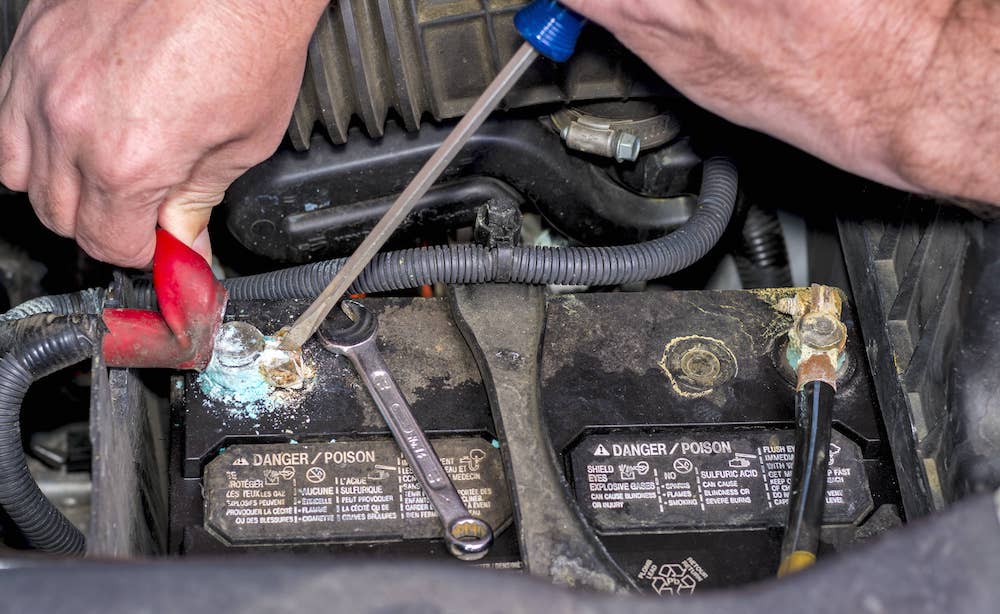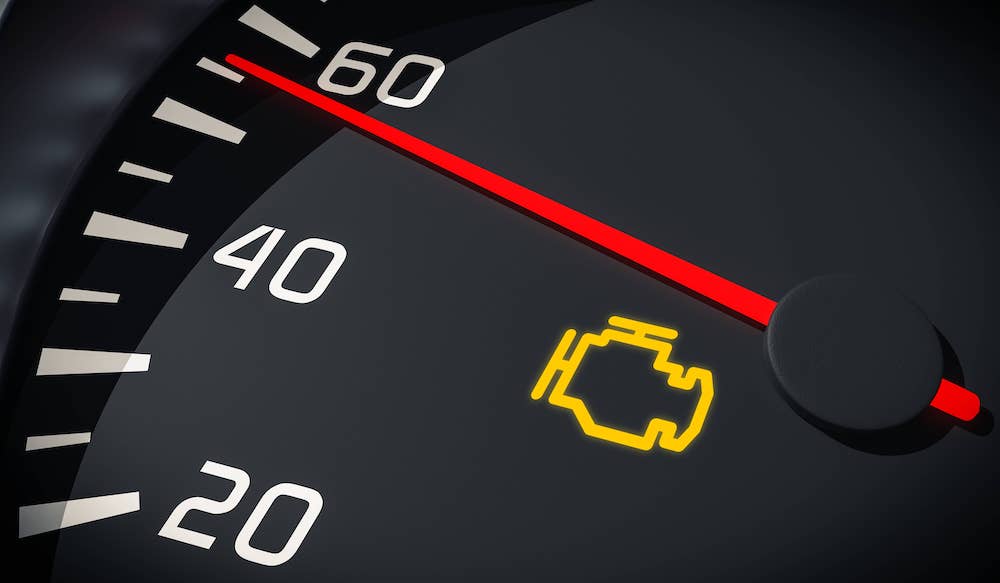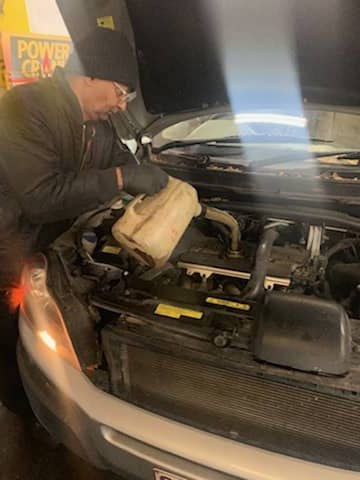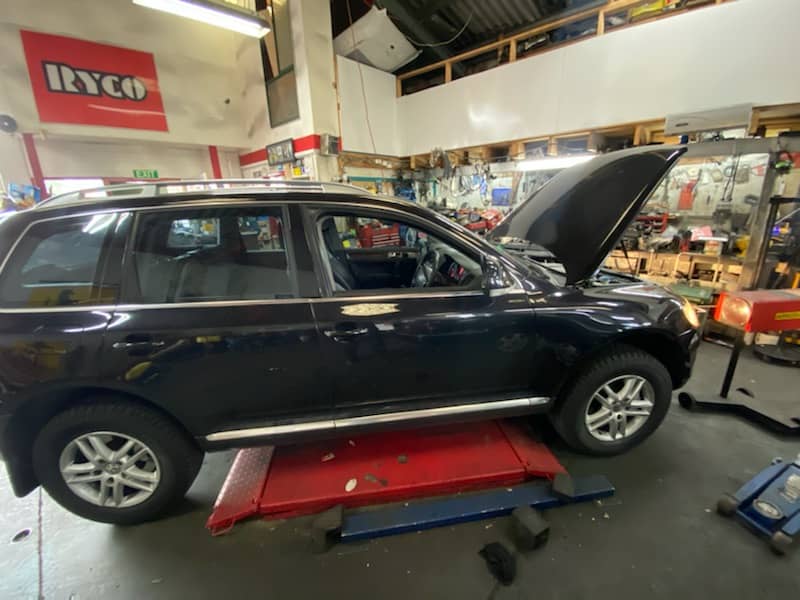Knowing that most individuals do not keep the mechanic’s tools in their trunks, their first call to action is usually to call a towing company.
With that said, when you are faced with a dead engine or your car won’t start, do not give up quite quickly. Sometimes the issues are petty and can easily be diagnosed. Different variables can make the car engine not to start. What are these variables?
The variables in question include:
- Checking whether the battery is okay. Mostly a dead battery is a reason a car won’t start. A battery is an essential component for a vehicle to run; it provides electrical power to the vehicle, which helps it run. So with that said, it is necessary to check whether the battery is okay regularly.
- Check whether the battery terminals corroded or tight.
- A defective ignition switch. If the battery is okay and still your car won’t start, then you probably have a problem with the ignition. This problem is not common, but occasionally it happens. When the armature bushings of the starter motor wear out, the armature bushings tend to rub against the field coils. This may lead to the engine not starting.
- A starter that is defective. The job of the starter is quite simple, just to ignite the car. It also features a vital component known as the ignition switch. Behind the ignition lock mechanism, it is where you will find this electrical switch. A bad ignition switch can cause the starter not to crank.
- Check whether the fuel tank has enough juice. This is a simple hitch that almost everyone who owns a car has experienced. Sometimes, it is easy to forget that to need to refill your gas tanks. If your car won’t start, before jumping to other conclusions or thinking the worst, it is proper first to check the gas gauge. To diagnose this problem, the solution is quite simple. Refill your tank.
- Check for a clogged fuel tank. This is another common issue. The fuel is not able to reach the engine due to a clogged fuel filter; hence the car will not start. Why does it not run? It is because, with a clogged filter, your car is not able to burn the fuel it needs for running. Therefore, it is advisable to replace your filters every 15,000 km to 20,000 km covered.
- It is proper to be conscious of the key-shaped or security light. Always check on the instrument panel whether the light is blinking or if it remains on.
- For cases of cars with antitheft systems, always check whether it is disabled before starting the car. These antitheft systems do not allow the car to be started if they are not disabled.
How Do I Check My Battery?
Mainly we check for a corroded, dead, or discharged battery. A dead or discharged battery may be caused by a faulty component in the electrical system of the car that drains it off, or when we forget to turn off the dome lights.
In cases of old batteries, it may just decide to give up the fight. However, despite whatever the case might be, a battery cannot start an engine if it is low on charge. Sometimes, when the battery is low on charge, you might hear some clicking sounds or the starter turning slowly while trying to run the engine.
There are few indicators to help you know when your battery is running short of charge:
- If you notice that the windshield wipers are moving slower than usual after turning them on that shows that your battery is low on charge.
- When you turn on the windshield wipers or when starting your car and notice that the dome lights get dim, it is another indication that the battery power is low.
- For relatively new batteries, recharging is an option. To recharge the battery is by jump-starting it and letting the engine run for a while.
Checking the Security or Key-shaped Light
In most cars, only when the correct key is used can the engine start. This means that the key features a chip with a security code inside. And the vehicle can only start when the sensor in the ignition reads the particular security code. When the security light comes and then disappears, that means that the code is accepted. When the security light stays on or it’s blinking, this means that the security code entered is not recognized; hence the car is not allowed to start.
In other cases, the sensor in the ignition lock is usually defective and needs to be reprogrammed. For some cars, you do not need an expert to fix the problems; you just have to read your owner’s manual or google how to re-program the key. If this does not work, you can decide to contact your dealer.
The Engine Light
Make sure you check the engine light always after ignition. When you start the engine, the PCM, ECU, or EMC light (also known as the engine computer) comes on; this indicates that there is power coming from the engine computer. However, if the ECM light does not come on, there may be no power coming from the engine computer. This can be either be caused by problems with the engine computer, blown a fuse, faulty main relay, or due to a broken wire.
Key Not Turning in the Ignition
There can be several reasons that can make the key not to turn during ignition.
These reasons include:
Mainly this happens when the steering wheel is locked with the front wheels turned aside or pressed against something by the ignition lock. To unlock the ignition lock for this scenario, gently try jiggling the key as you turn the steering wheel left and right.
If there is a problem with the key or with the ignition lock, this is mainly caused by the wear of the lock and the critical mechanism over time. You can try by using the spare key, and if it does not work, then you can contact your dealer.
What if There is No Light on the Instrument Panel?
When there is no light on the instrument display panel when you turn on the ignition, it means that there is no power coming from the battery. It could mean that there is a bad or damaged ignition switch, or the battery is dead. To check whether the problem is with the battery or the ignition, try turning on the headlights. If the headlights work, the battery is okay, which can only mean the problem could either be wiring between the battery and the ignition switch or the ignition switch.
In case there are no lights, the apparent assumption can be that the battery is dead. This can be the reason, but mostly it is usually not the case. Another reason can be, there is no connection between the electrical system of the car and the battery. To fix this problem, you can try tightening the battery terminals. For the dead battery, jump starting can help fix the problem.
What if the Starter Refuses to Crank?
If you try starting your car and nothing happens, it merely means that the engine is not turned over by the starter motor. Although there are several reasons that cause this, a dead battery is the most common cause. What are the other reasons?
The other causes include:
- A bad ignition switch. Behind the ignition lock mechanism, it is where you will find this electrical switch. A bad ignition switch can cause the starter not to crank. To fix the problem, you can try jiggling the key in the ignition.
- A faulty neutral safety switch. A problem with the shifter cable or the neutral safety can occur, this means that the car starts with the transmission at neutral rather than park.
- Another problem that can prevent the starter from operating can be a faulty electronic control module or the security system in general.
- A bad starter solenoid or starter motor.
- A bad connection of the starter solenoid control wire.
The Engine Won’t Start, but There’s a Click
This is not a non-usual problem, and it happens all the time. When you try to start the engine, all you hear from the engine compartment is a single click or repeated clicking, but the engine won’t crank. On many occasions, this is usually due to either a bad connection at the battery terminals or a dying battery. Additionally, when the battery terminals are corroded, it can also lead to such a problem.
Although other probable causes lead to this particular problem, this problem is mainly with the starter that is when it is no enough power to turn over the engine. But before concluding that the starter motor is the issue, first, check whether the battery terminals are not corroded and are clean.
The Engine Won’t Start, but It Cranks
If the engines happen to crank but refuse to start, it is also mainly caused by a weak or dying battery.
Other issues that may lead to this problem include:
- A faulty starter motor. When the armature bushings of the starter motor wear out, the armature bushings tend to rub against the field coils. This may lead to the slow cranking of the starter motor.
- Very old engine oil. Sometimes, very old or lack of engine oil may also cause a very slow crank. So it is advisable to check and change the engine oil regularly.
- It is not proper to dismiss the fact that also poor connections at the starter motor or battery terminals may cause this.
The Engine Cranks Very Slow Until It Just Clicks
This also means there is no enough juice in the motor to turn over the engine. To fix the problem, try replacing the old battery with a new one, or jump-starting can also work.
Other issues that can result in this include:
- As it is the case for many issues, the main problem is a low or dead battery.
- Another problem can also be a defective starter motor.
- Also, poor connections at the starter motor or battery terminals may cause this.
- Corrosion at battery terminals can also be a significant influence.
What Should I Do When My Car Doesn’t Start?
If your car doesn’t start, you have nothing to lose by trying to fix it. Most probably, you will not fix the actual problem, but at least by trying, you might get the engine started, which can be of much assistance if you are stranded.
We try to create awareness by coming up with a few guides which include:
Cycling the Key
In case your car won’t start, cycling & turning the key can help you determine the cause of this failure. How does it help? Firstly, your dome lights must be turned on, then try to start the engine. Note that, when turning on the engine, you have to watch the dome light. Now, if the lights happen to go off, it is an indication that your battery is almost dead. In order to heat the starter, terminals, and battery, try cycling the key repeatedly around ten times. For a period of around five minutes, stop and wait then try to start the engine again.
In case your dome lights had remained when you turned the key, and they won’t start, try something else.
Tapping on the Battery Terminals
It is not unheard of for car engines not starting due to dirty battery terminals. Without proper tools, it is next to impossible to clean corroded battery terminals. But this does not necessarily mean that you should do nothing if that’s the case. In order to make better contact, you can try jarring or moving the battery terminals. You can use the heel of a shoe to smack each individual terminal gently, this will help to rotate the terminals rotate around the battery post slightly. Once you have completed the exercise, you can then try starting the engine.
Smacking the Starter
Occasionally, the car engine might not start due to a stuck electrical contact. In order to free the stuck electrical connections, you can try smacking the starter motor using the tire iron from the car jack. These are for cars with an available starter motor.
Shifting the Shifter or Gear Stick
If your car does not click when you turn the key, this procedure is specifically for you. How do I go about it? The procedure is quite simple, move the lever (shift lever) to the neutral position with one foot on the brake pedal and try starting the engine. In case the engine still does not start, try moving back the lever to parking and try starting the engine again. These movements of the shifter lever sometimes re-establishes electrical contact inside the neutral safety switches, also referred to as the transmission range selector.
Swapping Relays
It mostly applies if the engine cranks, but the car still refuses to start up. Here, you turn the key to the position indicated as run, then with your radio turned off, try listening for a buzzing sound. This two-seconds buzzing sound is usually the fuel pump readying the injection system. In case you don’t hear any sound, these often mean that the fuel pump relay is either defected or the pump may be worn out. To correct it, you need to:
- Locate the fuel pump relay either from your owner manual or any other available source.
- Then jerk the fuel pump relay straight up.
- Swap the fuel pump relay with another that has the same part number.
- Finally, push the now replaced relay back to the socket and try starting the engine again.
Smacking of the Fuel Tank
This is also applicable if the car engine cranks but refuses to fire up. Using the heel of your shoe, try smacking the bottom of the fuel tank a few times, then try starting the engine. The reason for hitting the bottom of the fuel tank is mainly to jar the fuel pump motor.
Unflooding a Flooded Engine
If your car won’t start and you happen to smell gas, in most cases, the engine is usually flooded. To correct it, you press and hold the accelerator pedal while at the same time cranking the engine.
Tricking the Computer
Car engines can fail to start if they are cold. A cold engine can be due to lean fuel or air mixture resulting from a funky temperature sensor or a vacuum leak. Tricking the computer is not an actual trick but instead telling the computer to inject more fuel. How is the computer shown to add more fuel? It is quite simple, by pressing the accelerator pedal halfway and then staring the engine.
Although car problems are a collective experience, it is not bad, or you should not shy off from asking for professional assistance if you are unable to take care of the problem.
From time to time, it is essential to service your car to avoid some minor complications.





